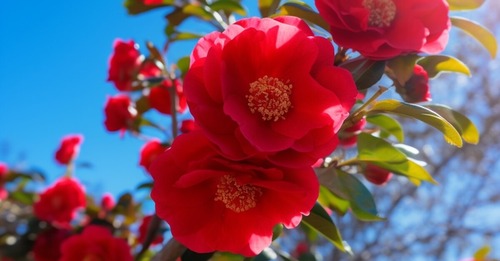Nature has an endless array of botanical wonders, and among them are flowers that are so rare they are seldom seen. These flowers often grow in isolated locations, require specific environmental conditions, or are endangered due to habitat loss and climate change. In this article, we’ll take a closer look at five of the rarest flowers in the world, each with its own unique story of survival and beauty.
1. Middlemist’s Red (Middlemist camellia)

Middlemist’s Red is considered one of the rarest flowers globally, with only two known specimens in existence today. It was originally native to China but was nearly driven to extinction in its home country due to overcollection and habitat destruction. The flower is named after John Middlemist, a British botanist who brought the plant to England in 1804.
Resembling a camellia, this delicate red or pink bloom has a lush, rose-like appearance with tightly packed petals. Middlemist’s Red grows in two locations: a private garden in New Zealand and the Chiswick House Gardens in London. Its beauty and rarity have made it an icon among plant enthusiasts, but its delicate cultivation needs make it hard to propagate.
Despite its near extinction, efforts are underway to save this unique plant. With careful attention and preservation, experts hope to increase its population and protect it from vanishing entirely.
2. Ghost Orchid (Dendrophylax lindenii)

The Ghost Orchid is a stunningly rare flower known for its ethereal beauty and elusive nature. Its white, ghostly blooms appear to hover in the air, thanks to the flower’s almost transparent stem. The Ghost Orchid is a leafless epiphyte, meaning it grows on trees and absorbs moisture and nutrients from the air.
Found mainly in the swamps of Florida and the Caribbean, this orchid is notoriously difficult to find and even more challenging to grow. The Ghost Orchid blooms irregularly and requires very specific conditions of humidity, light, and temperature. Conservation efforts are complicated by its need for old-growth forests, which are rapidly disappearing.
One of the reasons for the Ghost Orchid’s extreme rarity is its pollination method. It relies solely on a single species of giant sphinx moth to reproduce. If the moth population declines, so does the Ghost Orchid’s chance of survival. Conservationists continue to work on habitat restoration and controlled propagation to ensure that future generations will be able to witness this natural marvel.
3. Kadupul Flower (Epiphyllum oxypetalum)

The Kadupul Flower is often called the “Queen of the Night” because it blooms only at night and wilts by dawn. This ephemeral beauty is a type of cactus and has a sweet, enchanting fragrance that fills the air when it blooms. What makes the Kadupul Flower truly special, aside from its short lifespan, is its rarity in cultivation and the fact that it cannot be harvested without being destroyed.
Native to Sri Lanka and parts of India, the Kadupul Flower blooms under specific environmental conditions, such as high humidity and warm temperatures. Its transient nature has given rise to many legends and cultural significances in the regions where it grows. In Sri Lanka, it is considered a symbol of purity and spirituality.
Because it is nearly impossible to preserve or transport, the Kadupul Flower is not seen in botanical gardens or florists, making it an elusive sight even for plant lovers. Its captivating bloom is a reminder of the fleeting beauty of nature.
4. Corpse Flower (Amorphophallus titanum)

The Corpse Flower, or Titan Arum, is famous not only for its rarity but for the powerful odor it emits when in bloom. The smell is often compared to that of rotting flesh, a trait that helps attract pollinators like carrion beetles and flesh flies. Despite its unpleasant scent, the Corpse Flower draws crowds when it blooms due to its impressive size and exotic appearance.
Native to the rainforests of Sumatra, the Corpse Flower blooms only once every several years, making each flowering event a rare occurrence. The plant can grow over 10 feet tall, and its bloom is the largest unbranched inflorescence in the world. Unfortunately, deforestation in its native habitat has placed the Corpse Flower on the endangered species list, and conservation efforts are crucial to its survival.
Botanical gardens around the world have made significant efforts to cultivate the Corpse Flower and protect it from extinction. When one blooms in captivity, it becomes a major event, with visitors flocking to see (and smell) this extraordinary plant.
5. Juliet Rose

The Juliet Rose is not a naturally occurring flower but a stunning hybrid created by renowned rose breeder David Austin. Considered one of the rarest and most expensive flowers in the world, it took 15 years and approximately $5 million to cultivate. The Juliet Rose made its debut at the Chelsea Flower Show in 2006, where it quickly gained attention for its soft peach color and classic English rose form.
This rose’s rarity stems from the time and resources required to develop it. With its delicate blooms and high demand in the luxury market, the Juliet Rose is a sought-after symbol of opulence and beauty. Though it can be purchased today, its high price tag and exclusivity keep it out of reach for many gardeners and florists.
The Juliet Rose is an example of how human intervention in plant breeding can result in both beauty and rarity. Its creation and story have cemented its place as one of the rarest flowers in the world.

